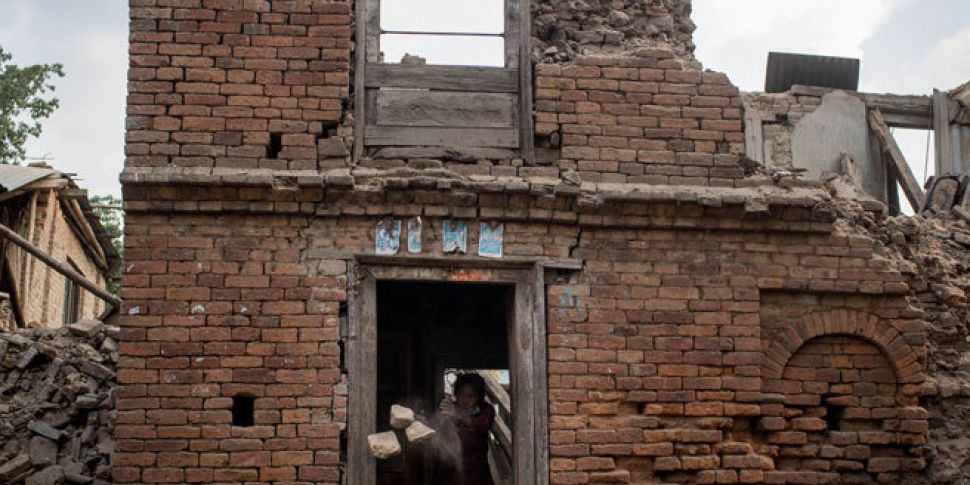At least 42 people are reported dead and over 1,000 injured as another powerful earthquake hit Nepal, flattening buildings 30 miles away.
It comes less than three weeks after the impoverished country was devastated by a 7.8-magnitude earthquake, which killed at least 8,000 people and injured more than 17,800.
Aid agencies are struggling to get reports from outside the capital of Kathmandu, and the quake's epicentre was located between Kathmandu and Mount Everest.
Volunteers are searching the rubble of fallen buildings through the night for survivors, calling out into the darkness for them to make a sound.
Rejoien Guru, one of the rescuers involved in the effort, said: "It's better to search at night so it's quiet."
In neighbouring India, at least 17 people have been confirmed dead after walls and rooftops collapsed - and Chinese media have reported one death in Tibet.
According to the US Geological Survey, there have been 10 strong aftershocks since - and two had magnitudes of 6.3 and 5.6.
This latest quake came from a depth of about 18.5km (11 miles).
In contrast, the more powerful earthquake on 25 April struck at 15km (9.3 miles) - and shallower quakes tend to cause more damage.
Experts have warned that buildings which did not topple following the earthquake three weeks ago have still suffered extensive structural damage, and many could be in danger of future collapse.
Rhita Doma Sherpa, a nurse, said the building where her two sons go to school was visibly cracked - and parts had collapsed.
"It was lunchtime. All the kids were outside. Thank god," she added.
The tremor hit near Mount Everest, and was measured at a shallow depth of about 19 km.
The epicentre was around 40 miles west of Namche Bazaar, a remote area near the Tibet border.
It was followed by two strong aftershocks of magnitudes 6.3 and 5.6.
Home Ministry official Laxmi Dhakal said at least 42 people were killed and 1,117 injured across Nepal.
He expects the death toll to almost certainly rise, with aid agencies struggling to get reports from outside the capital Kathmandu.
Four people died as several buildings, including a six-storey office block, collapsed in Chautara, Sindhupalchok, about 30 miles from the epicentre.
Conor O'Loughlin is humanitarian coordinator with Trócaire in Kathmandu. He told Newstalk Lunchtime that buildings damaged in the previous quake have now collapsed.
Norway's Red Cross, based at a 60-bed hospital in the town, said there were "many injured, several killed".
Tino Kreutzer, who is in Chautara, said the quake lasted around 40 seconds as hundreds ran into the streets.
Chautara suffered the heaviest death toll in last month's quake, which flattened buildings and left thousands homeless.
The airport has been closed more than 50 miles away in Kathmandu.
GOAL India country director, Dr Raj Singh is in Katmandu. He told the Pat Kenny Show earlier here on Newstalk that buildings shook extremely violently.
UNICEF communications officer Rose Foley said: "Our earthquake alarm went off in the building and we dived under tables and the shaking seemed to go on and on."
"Everyone was very shaken up. We got out as quickly as we could. The earth outside as the aftershocks were hitting felt like you were on a boat on a rough sea. People were very shaken up and anxious."
She added: "Our focus is on the children. And already after the first quake on 25 April, 1.7 million children are in urgent need of humanitarian aid in Nepal."
"They need clean water, shelter, sanitation, and our focus is on those children and how they have been impacted."
Dilip Dhakal tweeted a photo of people crowding Durbar Marg street, in the centre of Kathmandu.
He said people were "panicked" and "some are crying and wailing".
Sulav Singh, who ran into the street with his daughter, said: "I thought I was going to die this time. Things were just getting back to normal, and we get this one."
Two people were reportedly killed as the tremors hit northern India. In the capital New Delhi, people fled outside as buildings swayed.
The quake was about two miles deeper than the 25 April quake. Shallower quakes tend to cause more damage at the surface.
These people are in the capital Kathmandu.
Ross O'Sullivan is with Concern's emergency response team in Nepal. He told Newstalk Breakfast earlier this was a big event.
Ireland has previously approved aid of up to €1m for the humanitarian response in Nepal.









